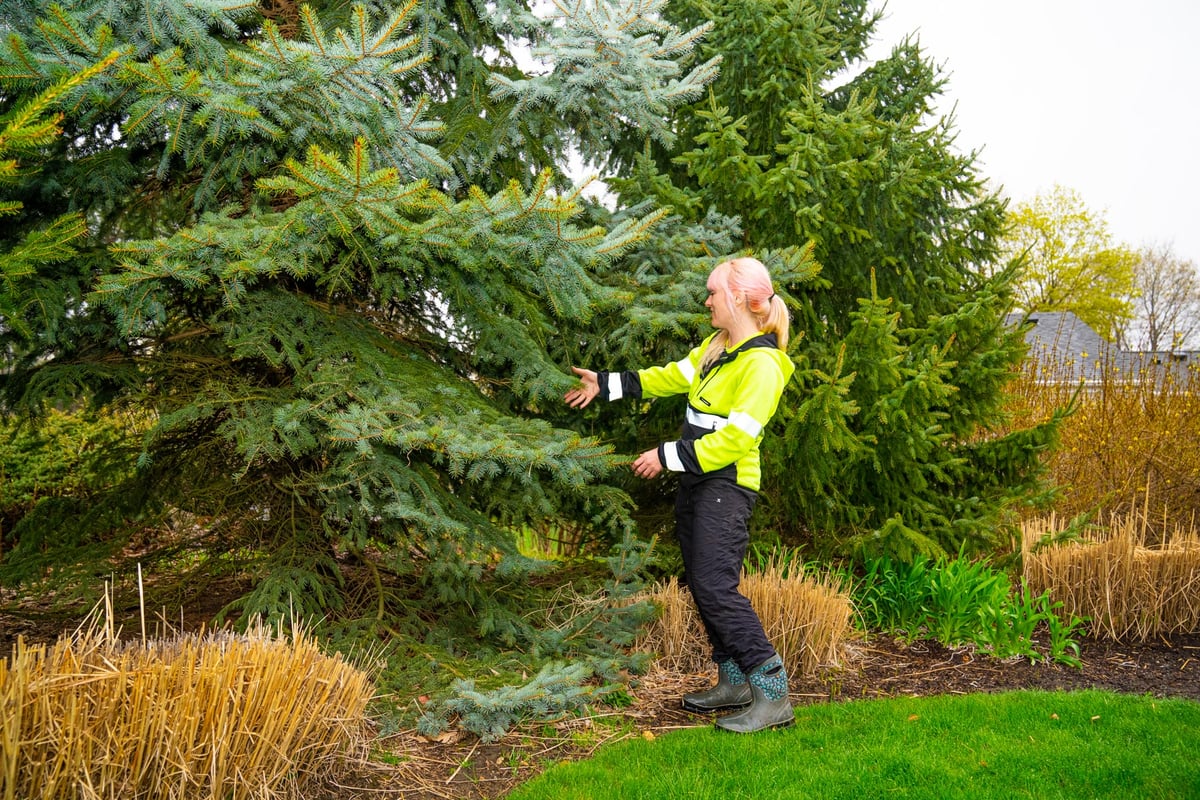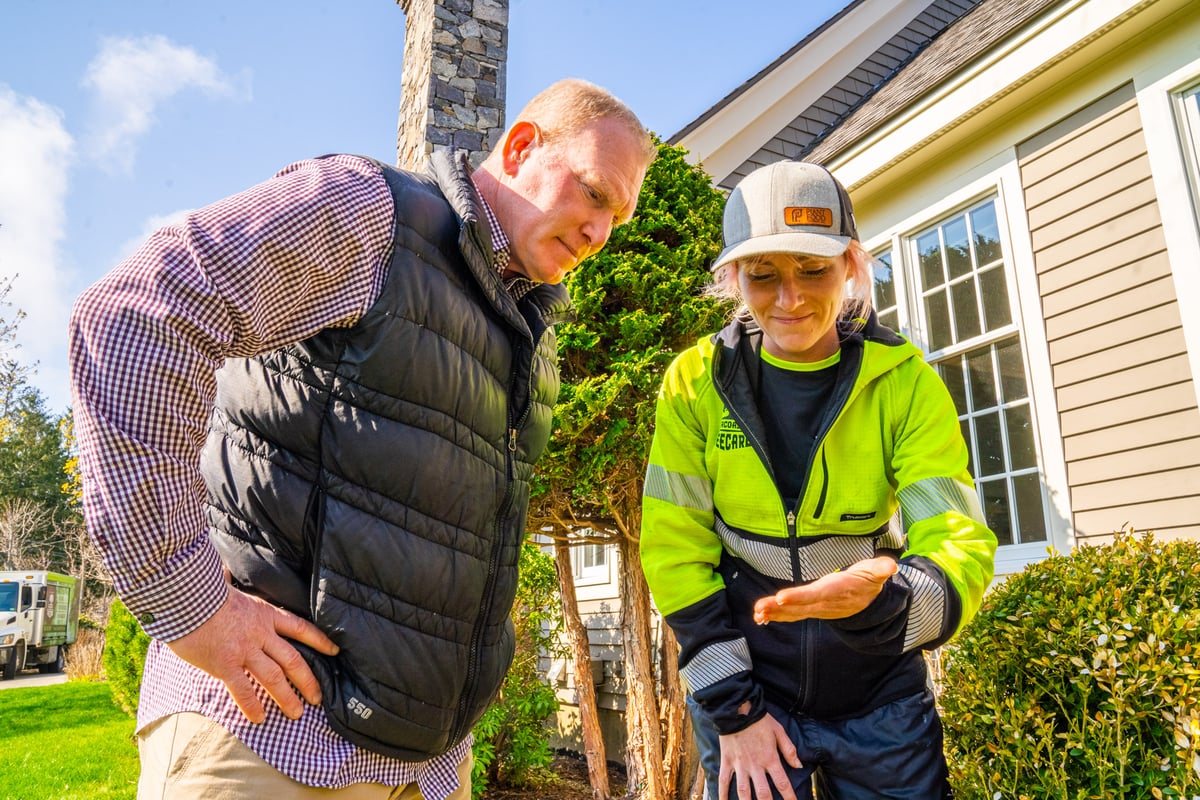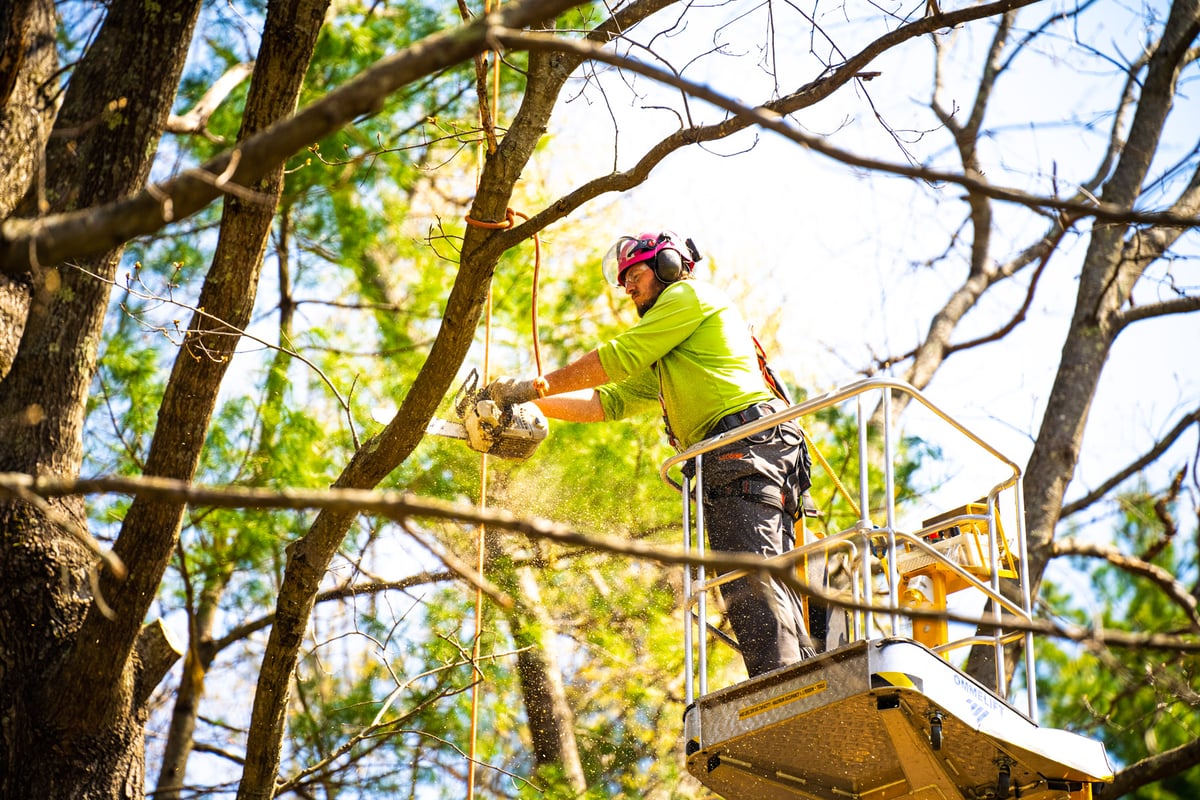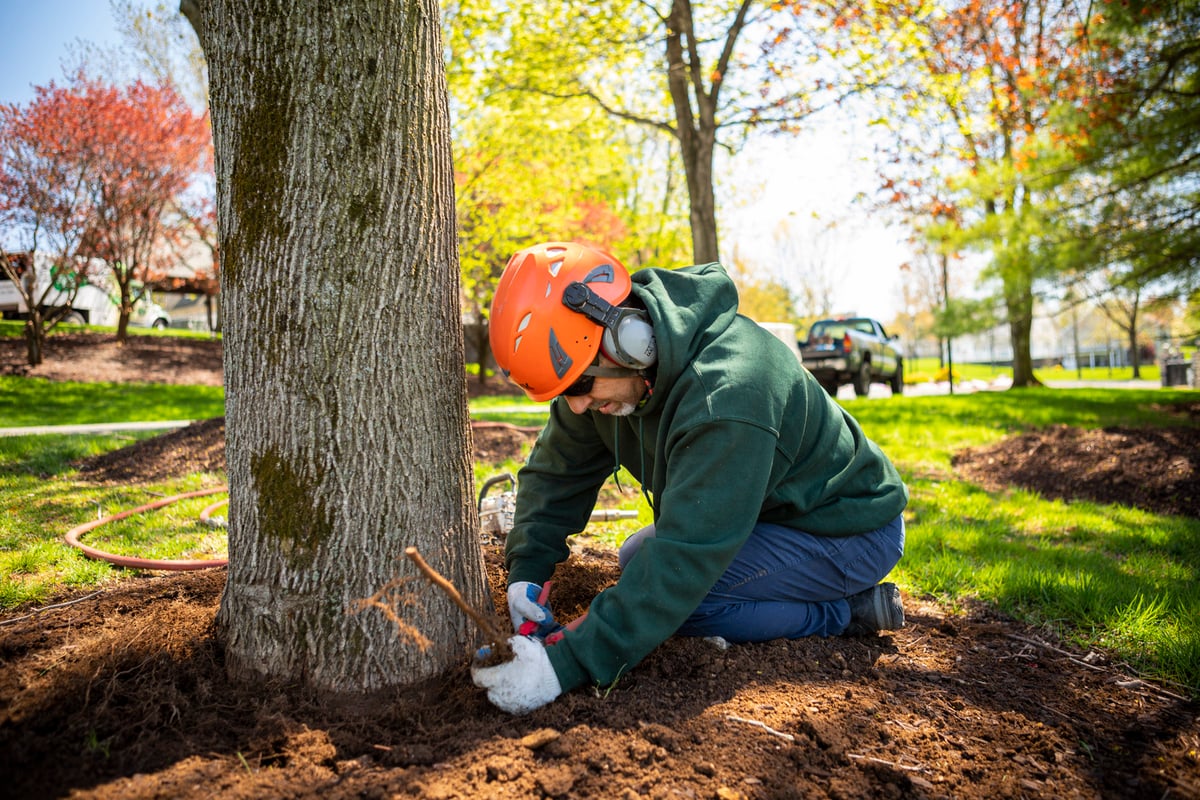
Alternatives to Tree Removal: How to Save a Dying Tree
Over the years, we’ve commonly had homeowners approach us about their dead or dying trees. People see a tree that is struggling and they often assume their best course of action is tree removal.
While that is certainly sometimes the case, sometimes a tree is not dead at all.
In fact, there are often alternatives to tree removal that can be considered if you don’t want to lose a tree on your property.
In this article, we’ll talk about how to save a dying tree and some of the potential alternatives to tree removal.
Can You Save a Dying Tree?
As you might have guessed, this is a nuanced question that doesn’t have a simple answer.
First and foremost, it’s important to point out that often homeowners think their tree is dying (or even dead) and it’s actually not. If a tree still has leaves on it, it’s not dead.

Some symptoms of a dying tree include:
- Nesting animals: Sometimes, nesting animals can be a sign that your tree has a problem. For instance, woodpeckers prefer dead wood as it’s easier to create nest cavities in the softened wood. Animals like squirrels and bats also seek out dead wood for nests.
- Mushroom growth: Dying trees can start to grow mushrooms and other fungi as the wood of the tree rots. Large patches of mushrooms on or around your tree can indicate a problem.
- Falling branches: If branches are falling and it’s not because of a storm, it could be that they are weakened and rotting.
- Peeling bark: Bark peels off of a tree that is in a state of decline. You might also notice cracks in the tree trunk.
Whether you notice one of these symptoms or something else, there could certainly be something wrong.
It could be very sick with a disease, struggling with an environmental stressor, or infested by pests.

If you’ve noticed any sort of change in your tree, then it is something worth pointing out to a tree care professional. A tree inspection can be done to determine what services your tree might require.
If a tree is not dead but is declining, you might be wondering if you can do anything to save it. The answer depends. For one, it depends on how rough the shape it’s in. If a tree has more dying branches than healthy ones, it’s going to be a battle.
The location of the tree, its species, and its age are three major factors that come into play as well. Some tree species can bounce back better than others.
How to Save a Dying Tree
As far as how to save a dying tree, it all starts with identifying what’s going on with it. Is the tree infested by a certain pest? Is it being ravaged by disease? The answers to questions like these will be critical in your next steps.
As you might have guessed, some pest and disease problems are curable while others are not. Once it’s determined what’s wrong with your tree, the proper solution can be put into place.

In addition to starting any curative disease or pest treatments that might be needed, tree pruning will be an important part of saving a potentially dying tree. Tree pruning is the process of removing diseased, dying, or dead branches to benefit the tree as a whole.
Removing these struggling branches helps to isolate the problem. For instance, it can help prevent the spread of disease to other parts of the tree. It also allows the tree to put energy into the tree as a whole instead of trying to put it into restoring those weakened limbs.
If a lot of the tree will need to be pruned off, then aesthetics will potentially come into play. For instance, if you were going to have to remove nearly half of the tree to get rid of all the dead wood, would it be too much of an eyesore for your property?
This answer might depend on how valuable that tree was to you.

Often, homeowners looking for alternatives to tree removal are willing to live with a tree that is heavily pruned if it will eventually be restored to good health.
A tree care professional will need to determine how much is safe to remove while keeping the tree balanced. Tree removal is sometimes a necessity when it comes to matters of safety. While we would prefer to save every tree, there are times when removal simply makes the most sense and is the safest option.
When Cabling and Bracing Can Help
When discussing alternatives to tree removal we would be remiss if we didn’t mention that sometimes cabling and bracing are effective solutions to tree problems. When a tree has a structural defect or has suffered some storm damage, cabling and bracing can be an alternative to removal.
- With tree cabling, specialized hardware is used to add extra support to the canopy of the tree. These cables will hardly be noticeable when installed properly.
- Tree bracing, on the other hand, involves the addition of steel rods to the trunk of the tree or its limbs. This also adds support to help reinforce weak spots.
Choosing Tree Care Services in Southern NH, ME, and MA
We know that trees can be complicated. We don’t expect you to know whether a tree is dead or dying…or whether or not it can be saved.
All of this should be left in the hands of a tree care expert.
A tree care professional will not only be able to tell you whether your tree is actually dying or not, but they’ll be able to provide advice on whether it can still be saved and what solutions will be most effective. If it can, they’ll suggest alternatives to tree removal like tree pruning, disease and pest management, and/or cabling and bracing.
Of course, if tree removal is determined to be the best course of action, then you want to make sure that you choose a qualified tree removal service. Tree work can be complicated, laborious, and even dangerous. You want to work with a company that is highly skilled at having trees removed in New Hampshire, Maine, or Massachusetts.
At Seacoast Tree Care, we work with a team of highly skilled Certified Arborists who can not only perform thorough inspections but will also ensure trees come down safely when they do need to be removed.
By choosing to work with a tree care professional who has significant experience, training, and skill (including horticultural expertise), you can feel confident that the best decisions are being made for your trees.
Ready for healthier trees at your Southern NH, ME, or MA home? Request your consultation and have your New England trees evaluated. By making a wise choice, you’ll know your trees are in good hands.


